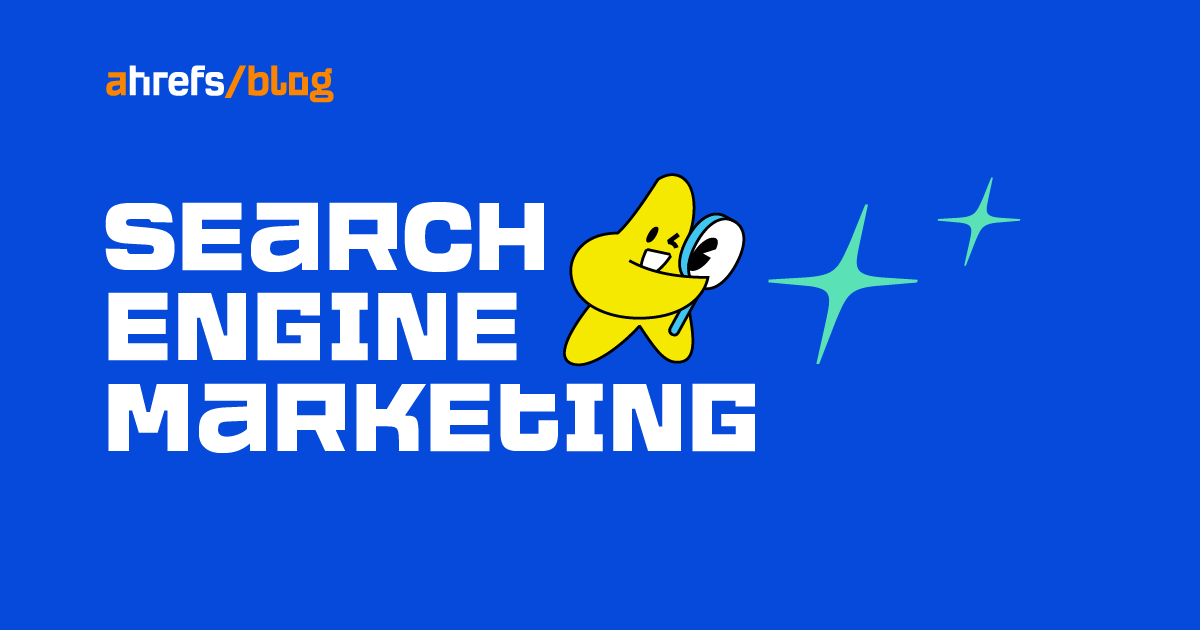GA4: The Good, The Bad, And The Alternatives via @sejournal, @macuraa
Discover if GA4 is any better than Universal Analytics, is it worse, and are there any alternatives if you don’t want to migrate to it. The post GA4: The Good, The Bad, And The Alternatives appeared first on Search...

In digital marketing, measuring success is all about the data – using a data-driven approach to track performance, identify developmental areas, and give you insight into your customer journey.
That’s the power of digital analytics, and more specifically, Universal Analytics – the free version of Google Analytics that currently dominates 86% of the market share.
Until now, that is.
That’s because Universal Analytics will be terminated as of 1 October 2023, making the new Google Analytics 4 (GA4) the only Google tool available for processing data and tracking website activity.
But what exactly is GA4?
Is it any better than Universal Analytics or worse, and are there any alternatives if you don’t want to migrate to it? Let’s take a look.
What Is Google Analytics 4?
While there are many guides to GA4 out there, we’ll give you a quick breakdown.
Up until October 2020, Universal Analytics was the default property type for websites – the go-to for digital analytics. However, this changed on 14 October 2020 when GA4 was released.
Now, a Google Analytics 4 property is the default when you create a property, making it the new generation of digital analytics.
But why? If Universal Analytics was so popular, why change it at all? Changes to online privacy policies for one, and changes in consumer behavior for another.
Add to that the need to view the customer journey in its entirety, and you have the basis for a new and improved analytics tool.
Now with all-new cross-platform tracking, you’ll be able to collect web and app data simultaneously, measuring user behavior across multiple platforms.
Add to this AI-driven predictive analytics, machine learning, data visualization, and a new focus on customer privacy, and you have the future of digital analytics.
What’s The Difference Between GA4 And Universal Analytics?
We know that GA4 can track activity across a web and app data stream, giving you a more complete view of user interactions than ever before. But in what other ways does the new Google Analytics differ from Universal Analytics?
A New Dashboard
Out with the old, in with the new – in this case, a new, more streamlined user interface or dashboard.
While it may take you a minute to come to grips with the new reporting interface, you’ll have more control, with buttons on the nav bar for the home page, reports, advertising, explore, configure, and library, with access to predictive-insights based on Google’s AI as well.
New Measurements
If Universal Analytics was all about page views, GA4 is all about events.
Instead of generalized data, you’ll have a more enhanced measurement that’ll give you a better understanding of how your users interact with your marketing campaigns, your mobile apps, and your website.
New Integration With Google Ads
If you’ve always wanted to measure your app and web integrations together, you’ll be pleased to see that’s one of the new insights GA4 provides.
You can track your app and web conversions across Google Ads and various other platforms, from social media to email. It’s an all-in-one analysis hub that’ll give you an at-a-glance picture of your performance across multiple channels, changing how you collect data.
New Metrics
From engaged sessions to engagement rate, engagement time, and more, GA4 uses new metrics to track your customer journey.
While there is a learning curve involved, having new data streams means having a complete guide to the behavior and interactions of your active users.
New Predictive Insights
With AI metrics like purchase probability, churn probability, and revenue prediction, you’ll be able to make more targeted, data-driven decisions based on the predicted behavior of your users.
You’ll be able to improve your performance, create new audiences, and customize your brand experience to your users’ wants and needs.
New Reporting
Want to track your customer lifecycle? Now you can with new reports for acquisition, engagement, monetization, and retention, giving you more visibility and in-depth analysis into your user interactions.
New Control
With a renewed focus on user privacy, GA4 offers more granular controls on user data, moving away from cookies and towards data modeling instead.
By using data modeling to close the gaps left by inaccessible data, GA4 places as much emphasis on privacy as on data collection.
New Cross-platform Tracking
From email to website to social media, mobile app, and more, GA4 now has the capability to track both app and web data at once.
This GA4 property allows you to track user behavior from start to finish, covering all interactions and touchpoints across multiple platforms and offering a complete view of the user experience in one.
New Updates To GA4
Since May 2023, Google has added the following updates to GA4:
Funnel reports: Create custom funnel reports that track the steps users take to complete a task, and evaluate user drop-off between each step. Audience builder: More flexibility and control when creating new audiences. Business objectives collection: The ability to create new reports tailored to your business, allowing you to source relevant data and information based on your goals. Search Console recommendation: Link your Search Console to your Google Analytics account to access Google Organic Search Queries and Google Organic Search Traffic reports. Improvements to reusing analytics.js website tags: If your website is tagged with analytics.js, you can reuse your existing tags when migrating to GA4, making the process easier and more streamlined. Integration with AdSense: Link your AdSense account to a GA4 property, and your AdSense data will be available in your GA4 reports, giving you new insights to help boost your ad revenue.The Benefits Of GA4
Thinking about making the switch to GA4? You’re not alone.
As of March 2023, an estimated 8.4 million websites are using Google Analytics 4.
And it’s not just big organizations and companies that are benefiting – smaller WordPress sites and Shopify stores are also seeing the results.
How? Just take a look.
Combined Web And App Tracking
When it comes to the user journey, the more you can see of it, the better.
That’s what GA4 does – collects data across multiple platforms and presents it to you in one single data stream, giving you a complete, convenient view of your customer lifecycle.
By capturing user interactions as events, such as a conversion event, GA4’s new metrics allow you to view web and app data simultaneously, giving you an enhanced measurement that helps optimize your online and website performance.
Simpler Data Analysis
Success in the digital landscape is all about engaging your user, and that’s where GA4’s machine learning and AI capabilities come in.
Being able to predict your customer’s actions means you’ll be able to give your users more of what they’re looking for, which is a win for both of you.
Thanks to GA4’s simple data analysis, you’ll be able to improve your website performance, make more informed, data-driven decisions, and add more value to your business as a whole.
New Audience Creation
Having better tools and measurements means being able to create new, more impactful audiences, which ultimately boosts your bottom line.
Use GA4’s predictive metrics to optimize your audiences and your ad spend, and watch your return on investment (ROI) flourish.
More Sophisticated Privacy Features
Most businesses use cookies to track user interactions, which can cause concern with some users over exactly what kind of data is tracked and collected.
Now with the latest version of GA4, you’ll have more control than ever over the kind of data you collect.
Not only will this keep you in compliance with privacy regulations, but it’ll also make your business more flexible and agile, allowing you to adapt to a landscape where cookies are no longer used, and data modeling fills in the gaps instead.
The Limitations Of GA4
Of course, while Google Analytics 4 has very real benefits, it also has its limitations, not the least of which is the learning curve involved when migrating from Universal Analytics.
Learning to navigate an almost entirely new platform – one that’s still in development – isn’t without its challenges, which include:
Complex Data Migration
Moving from Universal Analytics to GA4 won’t be an easy task. If you don’t have data or tag migration, your historical data won’t be transferred over, and the bigger your business, the bigger your challenges will be.
A New User Interface
Universal Analytics has hit types, and GA4 has events – which could be the biggest challenge for marketers to overcome.
With a new reporting interface in place, users will need to adapt to the differences quickly to stay ahead, and some may not be willing to bother.
Fewer Attribution Models
While Google’s priority is to offer the most up-to-date attribution data, the loss of some of its attribution models from within GA4 could prove to be tricky for some to adapt to.
Only last-click and data-driven attribution models have made the cut for GA4, which could have an impact on data and tracking visibility.
Limited Data Collection
Unlike its predecessor, GA4 is only able to collect limited data, meaning the picture that GA4 data gives of users’ interactions and behavior can be incomplete.
This, in turn, could limit marketers’ ability to adequately meet the needs and wants of their audience.
The Alternatives To GA4
Bearing these challenges in mind, is it necessary to move to GA4? If you don’t want to use cookies-free tracking or track user events, are there any alternatives that could be explored instead?
Luckily yes, with a range of options, including:
1. Adobe Analytics
When it comes to big business, Adobe Analytics is all over it – with its premium analytics package, that is.
With top-tier customization and flexibility, it offers similar data and measurements to that of GA4, although with a more advanced reporting structure.
The downside? Its high price tag. A premium product commands a premium price – one that you’ll need to contact Adobe directly to find out.
2. Matomo Analytics
Take control of your data with Matomo Analytics, a competitor of Google Analytics since 2007.
Used by over 1.4 million websites in 190 countries around the world, it’s by far one of the most popular analytics platforms out there.
Not only does Matomo adhere to privacy laws, but it also offers additional features to those available through GA4, including SEO keyword reporting, heatmaps, and A/B testing.
With easy migration from Universal Analytics, a (limited) free version, and paid versions starting at just $23 a month, it could be the GA4 alternative you’ve been looking for.
3. Fathom Analytics
If you’re all about user privacy, you’ll want an analytics platform that is too – and that’s where Fathom Analytics comes in.
Following a full set of data regulations from the GDPR to CCPA, ePrivacy, and PECR, Fathom offers web analytics without cookies and without storing users’ data.
With a privacy-first policy, single dashboard, and streamlined operations, Fathom is ideal for small businesses and offers a choice of 3 different plans, starting from $14 a month.
Making The Move To GA4
Is the move to GA4 right for your business? That’s a question only you can answer.
The one thing we do know with any certainty is that given the impending sunsetting of Universal Analytics, it’s a decision you’ll need to make sooner rather than later.
GA4 has its benefits, challenges, and alternatives, and you’ll need to bear all of them in mind when making your choice.
Do your research, ask the experts for advice, and use the power of digital analytics to take your business further.
More resources:
Getting Started With GA4: These 4 Tips Will Get You Up & Running Learn GA4: 17 Top Guides & Educational Resources Get to Know Google Analytics 4: A Complete GuideFeatured Image: ra2 studio/Shutterstock

 FrankLin
FrankLin 






























